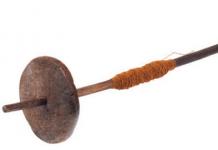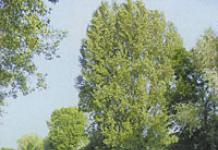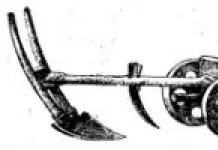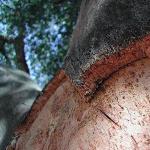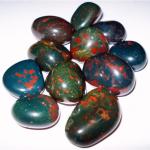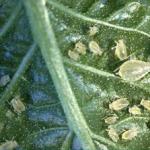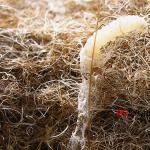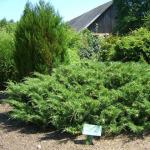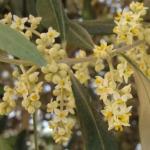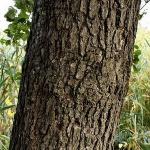Granite is a common mountain crystalline rock, the deposits of which are located throughout the planet. Translated from Latin, "granite" means "grain", which characterizes the structure of the stone. This is a frozen intrusive magma that did not have time to rise to the earth's surface, and formed coarse-grained granite crystals.
The main share of the mineral composition of granite in the amount of 60-65% is occupied by feldspars. 25-30% of the inclusions are quartz, and a small percentage is given to dark-colored minerals - hornblende and biorite.
Granite has high hardness, strength and density. The stone is 2 times stronger than marble, and its density reaches 2600 kg/m³. It is resistant to low temperatures, moisture and pollution. The stone is subject to melting at a temperature of + 700 ° C.
According to the chemical composition, granite is an acidic rock, the acidity composition of which can be determined by the amount of silicon dioxide. The higher the percentage of silicon dioxide in granite, the lighter the color of the mineral.
Types and colors of granite
The mineral has many varieties that differ in structure, inclusion of dark-colored components and color. Taking into account the textural and structural features, granites are:
- porphyritic - with elongated or isometric inclusions of quartz and orthoclase;
- pegmatoid - differ in uniform grain size and different sizes of inclusions of feldspar and quartz;
- Finnish - inclusions of red orthoclase of a round shape are characteristic;
- gneissic - a stone of a uniform fine-grained structure with a parallel arrangement of mica flakes;
- muscovite - the composition contains muscovite, quartz and orthoclase.
By the inclusion of dark-colored components, alaskites, leucogranites, two-mica, biotite, pyroxene granite, as well as alkaline, lithium-fluoride and hornblende varieties are distinguished.
The natural mineral has a wide variety of colors and shades, and depending on the place of extraction, it is divided into the following main groups:
- amazonite stones are green with bluish hues;
- Leznikov samples are red and pink;
- Sofievsky, Korninsky and Zhezhelevsky minerals have shades of gray and a rare white color.
- gabbro - black granite, in the texture of which you can see patterns consisting of stripes, waves, rings, blotches and spots.
Mineral deposits
Application of granite
Artificial granite, its pros and cons
Artificial stone is a composite material that consists of granite chips and polyester resin. It has many positive characteristics inherent in natural stone. Its advantages include the following properties:
- low thermal conductivity;
- resistance to moisture, temperature extremes, rust and household chemicals;
- hygiene due to the absence of micropores;
- easy to process;
- aesthetic appearance with a wide range of colors and shades;
- no radioactive background;
But along with the indicated advantages of artificial stone, the existing disadvantages should be identified. In the properties of artificial granite, there is no natural hardness of the mineral, which indicates its susceptibility to mechanical stress. Despite the fact that the artificial stone has an attractive appearance and shine, it is far from a natural mineral to the touch, and resembles plastic. Also, in a synthetic analogue it is impossible to reflect the unique pattern of a natural mineral for each sample.
Healing and magical properties of granite
5 / 5 ( 2 votes)
Hematite and its protective properties Pomegranate - a stone of love and fidelity  Heliotrope - "bloody" stone
Heliotrope - "bloody" stone  Biotite - description and properties of the mineral
Biotite - description and properties of the mineral
In comparison with humanity, granite can indeed be considered eternal. The age of even the youngest granites is 2 million years, while the age of the Homo Sapiens species is measured in only tens of millennia. The oldest granites are billions of years old.
Geologists call granite the "calling card" of the planet Earth. Many other rocks are also found on other planets and their satellites that have a solid surface, but granite has not yet been found anywhere except on Earth. Meanwhile, all the planets of the solar system were formed from one gas and dust cloud. This makes the problem of the origin of granite especially puzzling.
Background
Geologists of the 18th century associated the origin of granite with the ancient ocean. They believed that crystals settled to the bottom from sea water, from which granite was formed. Scientists who hold such views are called Neptunists.
At the beginning of the 19th century, another theory appeared, the adherents of which were called plutonists. They believed that granite was generated by volcanic magma. These scientists imagined the process of granite formation as follows: hot aqueous solutions coming from the depths of the earth dissolve some of the chemical elements that make up the rocks. Their place is taken by other elements brought by aqueous solutions, and this is how granite is formed.
This view was also very far from the truth. But we should not forget that at that time scientists had little information about the composition of granite rocks, and the physicochemical processes occurring in the earth's crust were not entirely clear. And yet the direction was correct: the formation of granite is really associated with magma and volcanic activity.
Modern idea of the origin of granite
The process of granite formation was explained by the American geologist N. Bowen. He connected the origin of this rock with the crystallization of basaltic magma. This explains where granite could come from on Earth, if it is not found on other planets and satellites of the solar system, because there are basalt rocks there. Crystallization of minerals in basaltic magma proceeds in a certain sequence, which was called the "Bowen series". There is a gradual enrichment of the melt with various low-melting chemical elements - sodium, potassium,. Granite is the result of this process.
The magmatic origin of granite today can be considered proven. Even modern volcanic eruptions often bring to the surface magma close in composition to granite.
The formation of granite and faceted soil in general is still not fully understood. The strength of the rock is such that only 1 cm² of it can withstand a 600 kg load without consequences. This is 2600 kg/m³.
The formation of granite and faceted soil in general is still not fully understood.
The amazing hardness of granite is up to 7 points on the Mohs mineralogical scale. This hardness scale has 10 divisions and uses the scratching method. The density of granite is impressive: its 1 cm³ weighs 3 times the same volume of water.
It cannot be said that all the physical properties of granite are impeccable. Withstanding temperature fluctuations of 100 degrees or more, insane for a person, he cannot boast of the same excellent refractoriness and melts when heated to 700 ° C.
The low melting point of granite is the main reason why many ancient structures did not survive the fires and were irretrievably lost.
Given this feature, subsequent generations of builders and architects still prefer to use all types of granite as a facing material. Frost-resistant, with a water and dirt-repellent surface, it is distinguished by a favorable price among materials of a similar purpose.
Breed composition
What is this breed? The mineral composition of granite is based on such minerals formed during the crystallization of magma as plagioclase, potassium feldspar, quartz, micas. Granite draws its composition from igneous plutonic rocks of high acidity.
The basis of the earth's crust, its most important rock is granite stone. However, how such minerals are formed is still not completely clear. There is an assumption that in the process of crystallization, basaltic magma is gradually saturated with various chemical elements. Moreover, this process is subject to a certain pattern. At the end of this complex and long journey, differentiates are formed - derivatives of a certain basalt melt. The chemical composition of granite indirectly indicates the veracity of this assumption. After all, the rock is saturated with low-melting sodium, potassium, silicon.

Granite stone is the basis of the earth's crust, its most important rock.
The stone is multifaceted. Its structure may be different. It can be fine, medium and coarse grained. The finer the grain fraction (from 2 mm), the stronger the rock, the less susceptible it is to the influence of various atmospheric phenomena.
Gallery: granite stone (25 photos)



Color variations
Varieties of granite find different applications in the spheres of human life. In many ways, color matters. It can be red, black, gray, beige, brown, bluish and even pink. Quartz and mica fragments in the composition give the stone, illuminated by the sun or artificial light, a sparkling look.
Granite draws its colors from its constituent feldspars.
Pink granite for its shades from delicate to deep purple is also called amethyst. Its deposits on the territory of Russia are in Karelia. And in Brittany there is Pleneuf-Val-André, the coast of which is called the Pink Granite Coast for the unique delicate color of the boulders.

Varieties of granite find different applications in the fields of human activity.
Saturated red slabs can be found in the decoration of buildings, bridges and embankments.
If the composition of the rock is dominated by black quartz, then the color of granite is black. This variation is in great demand in the construction of monuments, along with marble. Solemnly strict and at the same time radiating brilliance, such a stone looks amazing both in the form of a stele and as part of a composite monument.
Green is rare. Gray is the most common in construction.
Amazon stone
Amazonite granite among others looks magical. Its greenish-emerald hue looks perfect in caskets, snuff boxes, ashtrays and even beads embodied in stone.
The first deposit of this rock was discovered in Mongolia. But earlier it was also found in the Scythian mounds in the form of jewelry, household items and even weapons. Even Herodotus and Pliny associated such an interesting name of the stone with the militant Amazons (from the Greek "Amazon" - breastless).
The works of ancient scientists contain a description of these women, who, worshiping the goddess of fertility, sacrificed their breasts to her. One of the legends puts forward a version that the use of granite among the Amazons made it possible to do without the brutal amputation of the right breast. Instead, warrior women rubbed it with green amazonite powder from childhood. This, of course, is only a beautiful version, but it is not without scientific background.

The breed comes in shades from green to almost blue. This is a beautiful finishing and ornamental material.
Often traces of tantalum and tin are found in its composition. It is found on the Kola Peninsula and in the Urals. Other places of production - Madagascar Antananarivo and Zimbabwe.
What is better granite or artificial stone (video)
artificial or natural
Despite the widespread mining, the properties and use of natural granite do not always satisfy the goals of the end user. And price is not always the deciding factor. She's not small though.
Artificial granite successfully solves problems that are heavy for natural granite. Products from it look amazing.
It is difficult to call a stone unnatural: consisting of 80% natural granite chips, it is outwardly indistinguishable from natural.

The characteristic of artificial granite differs little from the characteristics of natural stone. But the price differs markedly.
The main advantage is the ability to form almost any shape given by human imagination, because granite is formed from a viscous mass.
Its properties are somewhat inferior to the natural mineral. But much depends on the quality of the components and the integrity of the manufacturer.
It is sometimes difficult to distinguish between the material created by nature and man. There is only one characteristic of granite that will help to do this. Tap a metal object on the surface: if it is natural, then the sound will be sonorous, and if not, it will be muffled.

How to define quality
A brief description of the stone is usually not complete without mentioning possible cracks. But are they married? Whatever the color of the minerals, the strength and durability of granite are determined by nature itself.
The ability to repel water and resistance to pollution, as well as numerous granite monuments of history and architecture with several hundred years of history, allow us to assert that no minor natural defects in stones can affect their operational properties. The service life of granite products can reach up to 500 years.
The opinion about the radiation background of the breed, which can harm human health, is biased. The level of its radiation does not exceed the permissible.
Granites are melting enough. But hot kitchen utensils will never melt or damage a window sill or countertop made from this stone.
The stone is processed according to one or another scheme, depending on the purpose of the final product.
It is sawn, polished, ground, polished. Products are made even from faceted granite.
Burchadirovanie get the effect of grainy texture with anti-slip effect. Imitation of natural cleavage is widely used in the production of monuments.
Attention, only TODAY!
Granite is the most common rock in the crust of our planet. The word "granum" in Latin means "grain", which seems a little strange and unexpected to non-specialists. After all, we are all accustomed to considering it a homogeneous monolith, characterized by great strength. What grains is this stone made of? What is granite made of and what does it look like?
Total information
According to geologists, granites can be called the visiting card of the Earth, since the role of these stones in the structure of the earth's continents is significant. Whether there is granite on other planets orbiting the Sun is not known to astrophysicists for certain, although there is indirect evidence of the presence of stone on Venus. In addition, scientists suggest that our planet is made of the same substances as other terrestrial planets.
As for the origin of the granites themselves, this mystery still remains unsolved. Scientists suggest that the stone was formed as a result of the immersion of the solid substance of the earth's crust into the upper mantle and its melting there. Perhaps modern technologies and instruments will help scientists find answers to their questions.
What minerals are granite made of? Granite is a rock composed of 60-65% feldspar, 25-35% quartz, 5-10% mica - biotite/muscovite. The colors and strength of granites depend on the ratio of these main components.
Types of granite
 In the earth's crust and on its surface, you can find different types of granites, and they all differ in mineral composition, structure, grain size. A stone with a high content of quartz and a low content of mica is considered to be of higher quality. If the stone contains pyrite, it will cause rusty and brown spots, and rapid destruction.
In the earth's crust and on its surface, you can find different types of granites, and they all differ in mineral composition, structure, grain size. A stone with a high content of quartz and a low content of mica is considered to be of higher quality. If the stone contains pyrite, it will cause rusty and brown spots, and rapid destruction.
Ideally, if the quartz grains in the rock are in close contact, and other minerals in a fine state, fill the gaps between them. If quartz granules are surrounded by other minerals, the quality and strength of granite is reduced.
According to the mineral composition, granites are of the following types:
- There is a lot of plagioclase in plagiogranite, and a small amount of feldspar, which gives the stone a red or pink color. There are plagiogranites that do not contain feldspar at all.
- In pink alaskite, there is a lot of feldspar, and a very small amount of biotite. Dark-colored inclusions in feldspar are absent or present in small amounts.
Types of granites by structure and texture:
- Granite porphyritic - contains elongated inclusions of different lengths. Basically, it is quartz, microcline or orthoclase, 10-15 cm long.
- Porphyritic granites, consisting of rounded pink feldspar grains surrounded by light gray plagioclase, are called rapakivi granite. Granite of this type is not very durable, and quickly crumbles under the influence of external factors.
By the size of grains-granules:
- Grains-granules of stones can have different sizes from one and a half millimeters - up to 1 centimeter. A stone with granules larger than 1 cm is called coarse-grained; stone with granules from 2 to 10 mm - medium-grained; granules less than 2 mm are characteristic of granite with small grains.
Physical Properties
Description of the properties of stone: fine-grained granite, in fact, is eternal. Medium-grained and coarse-grained and types are less durable, but they will be enough for more than one generation of users.
Granite is resistant to rain, snow, wind and acids. Differs in high durability to compression and friction. Its compressive strength is twice that of marble.
Granite does not absorb water, the high water resistance of the stone makes it possible to use it for facing fountains, pools, embankments. The beauty of the texture of granite and the variety of colors allows it to be used unpolished or polished to a mirror finish without additional coloring. In any version, it looks decorative due to the inclusions of mica, creating a bewitching play of light, and various colors - blue, gray, pink, red, orange, green.
Granite is also widely used due to its good compatibility with other finishing and building materials - metals, clay, wood, ceramics, artificial stones, marble.
The description of granite would be incomplete without mentioning that the stone is environmentally friendly, it does not contain impurities that are harmful to health, it does not emit radio waves. That is, the stone is completely safe and can be used in the construction and decoration of premises for various purposes.
Mining
Granite is mined on all continents of the planet, there is no shortage of this stone. Only in Russia there are about 50 stone deposits located in various regions of the country.
Also, granite is mined in Ukraine. Granite deposits stretch in a wide strip from the southeast to the northwest. The length of the strip is 1000 km, the width is 200 km, in some areas the strip comes to the surface.
In the USA, granites are mined in the eastern part, on the coast of the Atlantic Ocean.
Where to apply?
“Fresh”, or recently mined granite from unweathered massifs has the best consumer characteristics, therefore, it is used in construction, as well as for the production of other products.
Fine-grained or medium-grained species have a denser structure, they have fewer pores, so they are stronger and more resistant to weathering.
Coarse-grained granite is used less often in construction, and only if the feldspar in them is absolutely fresh, without cracks, turbidity, and white powder formations.
Granite slab, consisting of a large amount of quartz, is used in places with high traffic. Floors and stairs are made of durable granite, it is especially necessary in public places, where many people pass during the day.
Countertops, cornices, window sills, bar counters, columns are made from granite - they can be installed both inside the building and outside.
Granite is used to make decorative tiles, monuments, commemorative plaques, memorials and obelisks.
The stone is suitable for arranging Japanese stone gardens, rockeries, alpine slides, for lining ponds, and laying paths.
In road construction, granite is used as curbs and paving stones.
Metaphysical properties
Granite, as an integral part of the earth's crust, also has metaphysical properties. It activates the activity of the brain, develops and strengthens memory, enhances intuitive abilities, helps to find a non-standard solution to a particular problem.
The healing properties of the stone are manifested in the treatment of diseases of the heart, lungs, bronchi, throat.
Granite has a beneficial effect on the body during colds, lowers the temperature, increases vitality. A strong and durable mineral strengthens the human musculoskeletal system - joints, spine, bone tissue.
Granite will become a good talisman for people whose professions are associated with risk - pilots, astronauts, geologists, sailors, rescuers, security officials. Granite will help teachers and lecturers, since their professions are considered the most difficult and even harmful to health today. They need granite to find new approaches in the educational process, strengthen the nervous system, increase resistance to stress.
For students, graduate students, students and schoolchildren of different ages, granite is useful for the development of memory and mental abilities.
Among the whole set of rocks of the Earth, the main group is igneous, which were formed over millions of years in the thickness of the earth's crust from volcanic lava. These breeds include one of the main
building materials - granite. The properties of this stone have long been studied by people. This led to the fact that it was widely used in construction in the past, it is still used today. A huge number of monuments and structures of antiquity have survived to our times due to the fact that they were made of granite. Its unique composition, beautiful grain structure and useful properties make this stone a very popular building material.
Granite deposits
This rock is formed as a result of solidification of magma at great depths. It is affected by high temperature, pressure, gases rising from the thickness of the earth's crust and evaporation. Under the influence of these factors, such a unique structure is obtained, the play of light and shadow that we observe in this stone. Most often it is gray in color, but sometimes red or green granite is mined. Its properties depend on the size of its constituent grains. It is coarse-grained, medium-grained and fine-grained (the most

lasting).
This rock usually lies at great depths, but sometimes comes to the surface. Granite deposits are found on all continents and in almost all countries, but most of them are in Siberia, Karelia, Finland, India and Brazil. Its extraction is quite expensive, as it lies in the form of huge layers, often stretching for several kilometers.
The composition of this stone
Granite refers to polymineral rocks formed by several substances. Most of all in its composition is feldspar, which determines its color. Almost a quarter is occupied by quartz, which is an inclusion of translucent bluish grains. Granite also contains other minerals (for example,

up to 10% it can contain tourmaline, up to 20% mica), as well as inclusions of iron, manganese, monazite or ilmenite.
The main properties of granite
The advantages of this stone allow us to admire the architectural structures made from it in antiquity even now. What properties of granite determine its widespread use?
1. Durability. Fine-grained varieties of granite show the first signs of abrasion only after 500 years. Therefore, sometimes it is called the eternal stone.
2. Strength. Granite is considered the most durable substance after diamond. It is resistant to compression and friction. This is due to the properties of quartz, which is part of it. In addition, it becomes clear why this rock is so strong, after finding the answer to the question of what it is actually very high - almost three tons per cubic meter.
3. Weather resistance. Granite can withstand temperatures from minus 60 to plus 50. This is very important in a cold climate. Studies have proven that granite products do not lose their properties after 300 freezing and thawing.
4. Waterproof. It is thanks to this property that granite is so

frost-resistant. Therefore, it is ideal for facing embankments.
5. Ecological purity. Granite is not radioactive at all and is therefore safe for any construction work.
6. Fire resistance. This material begins to melt only at 700-800 degrees Celsius. Therefore, tiling a house with them is not only beautiful, but also safe.
7. Ease of processing, compatibility with any building materials and the richness of textures and colors make it indispensable for interior design.
8. Resistance to acids and fungi.
Granite processing

Despite the strength and high density of the rock, this stone is easy to process. It is quite easy to cut and polish. Usually large granite blocks, slabs or granite chips and crushed stone go on sale. It is used to make tiles, countertops and paving stones. The richness of the textures of this natural stone makes the use of granite acceptable for decorating any interior. Looks very nice well absorbing light. Polished to a shine, it shows all its virtues and the beauty of mica inclusions. When processing the rock by chipping, a relief structure is obtained with a decorative effect of the play of chiaroscuro. And some types of gray granite become milky white after heat treatment.
Types of granites
Based on what minerals are included in it, it is especially worth paying attention to the dark-colored components. These are divided into several groups: alaskite, leucogranite, biotite, pyroxene, alkali and others. These breeds are also different in structure:
Porphyritic granite, which contains elongated inclusions of minerals;

Pegmatoid - differs in uniform grain size of quartz and;
Gneissic is a uniform fine-grained stone;
Finnish granite, which is also called rapakivi, has round blotches of red;
Written - a very interesting variety, in it particles of feldspar are arranged in the form of wedge-shaped strips, similar to ancient letters.
Recently, artificial granite has also been used, created by firing clay with minerals. Such a stone is called porcelain stoneware and is almost not inferior in properties to natural.
Types of breed by color
The properties and use of granite also depend on its color. On this basis, several breed groups are distinguished:
Amazonite granite, due to its green feldspar, has a pleasant bluish-green color;
Rose red and Leznikovsky red are the most durable;

Gray rocks are very common, and they got their names from the places of extraction: Korninsky, Sofievsky, Zhezhelevsky;
Rare is white granite. This variety includes colors from pale green to pearl gray.
Application of granite
This stone has been used in construction for many centuries and this is due to the fact that its fine-grained varieties begin to collapse only after 500 years. It is impact resistant and very durable. These basic properties of granite allow it to be widely used in construction. Where is the mineral used?
1. Most of the monuments and monuments are made from it.
2. Its strength and resistance to abrasion make it possible to use the stone for the manufacture of steps, flooring, porches and even pavements.
3. In cold climates, the most demanded building material is granite. Its properties make it possible to clad buildings and even embankments where

there are harsh winters.
4. This stone can transform your home both inside and out. Designers successfully use it to make columns, stairs, skirting boards, countertops and railings. They also cover the walls of houses.
5. The use of granite in swimming pools, bathrooms and fountains is due to the fact that it does not let water through at all. And also does not collapse under its influence.
Granite in the interior

In recent years, this stone has become very widely used for interior decoration. It combines beautifully with all materials - wood, metal and ceramics - and suits the design of any home. In addition to wall and floor cladding, granite can also be used in many places in the apartment. Its properties make this stone indispensable for the manufacture of window sills and countertops in the kitchen. They are easy to care for, they are durable and do not deteriorate from exposure to moisture and high temperatures.
Granite is also widely used in landscape design. A walkway or gazebo lined with this stone will not be afraid of weathering and will not crack over time. The flower beds decorated by him, for example, in style or in the form of a terrace, look beautiful. It is very convenient to use granite for the manufacture of curbs and stairs.
The properties and uses of this stone have long been studied. And it has been used by man since antiquity. With the advent of new processing technologies, granite began to be used even more often, because it became possible to improve its decorative properties.
